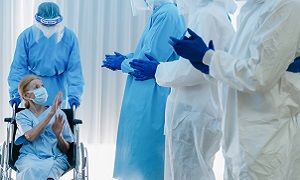Cerebral Angiogram
Cerebral angiogram is an image that can help your doctor find blockages or any kind of abnormalities in the blood vessels of your neck and your head. To get the image, the doctor needs to perform a diagnostic test termed a cerebral angiography. The test is performed with the help of a contrast medium, which the doctor injects into your blood.
Purpose
The procedure is used to detect or confirm abnormalities within the blood vessels in the brain, which can include:
- an aneurysm, a bulge or a sac that develops in an artery due to weakness of the arterial wall
- arteriovenous malformation, a tangle of dilated blood vessels that is known to disrupt normal blood flow in your brain.
- atherosclerosis, a narrowing of the arteries.
- vasculitis, an inflammation of the blood vessels
- a blood clot
- a brain tumor.
- a tear in the wall of an artery, which is known as a vascular dissection.
- a stroke
The test can be performed for multiple reasons which include evaluating the arteries of the head and neck before surgery. The test can help provide additional information on abnormalities which are seen on MRI or CT of the head, such as blood supply to a tumor. The test can also be performed as preparation for other medical treatments, such as the surgical removal of a tumor. It can be performed as preparation for minimally invasive treatment of a vessel abnormality as well.
The test can help diagnose the causes of several symptoms such as:
- Severe headaches
- Dizziness
- Slurred speech
- Blurred or double vision
- Loss of coordination or balance
- Weakness or numbness
Preparation

First, you should talk to your doctor regarding how you should be preparing. You might not be able to eat or drink anything after midnight before the procedure. It is also likely that your doctor will ask you to stop taking any medications that can increase the risk of bleeding. These can include blood thinners, anti-inflammatory medications or aspirin.
If you have any kind of allergies or medical conditions, you will need to inform your doctor in advance. Sometimes people are allergic to the contrast material which is used during the procedure. Let your doctor know about any allergies that you have including allergies to anesthesia or the contrast material.
Also, the risk of complications can also increase if you have certain illnesses and conditions. For example, if you are suffering from diabetes or kidney disease, then the contrast material might cause temporary damage to the kidneys.
Procedure
For this test, your healthcare team will be including a radiologist, a radiology technician, a neurosurgeon or a neurologist specializing in interventional radiology.
You will most likely be sedated before the procedure. To stabilize your head, a strap, tape or sandbags are going to be used. It is quite important that you lie still during the test.
First, your doctor will be sterilizing an area of your groin. He/she will insert a long, flexible tube known as a catheter, through your blood vessels and into your carotid artery. This is the blood vessel in your neck responsible for carrying blood to the brain.
A contrast dye will flow through the catheter and into the artery. From there, it will be traveling to the blood vessels in your brain. You might receive a warm feeling as the dye flows through your body. Your doctor will take several head and neck X-rays. During this time, you might be asked to hold still or even hold your breath for a few seconds.
After this is done, your doctor will remove the catheter and place a dressing over your insertion site. The entire procedure generally takes between one to three hours.
After the procedure
You will next be sent to a recovery room, where you will need to lie for around two to six hours before you are sent home. At home, take care not to lift any heavy objects or overexert yourself for a minimum of one week.
If you experience any of the following, call your doctor:
- Signs of a stroke, including slurred speech, weakness, numbness or vision problems
- Redness and swelling at the catheter insertion site
- Swelling or coldness of the leg
- Dizziness
- Chest pain
A radiologist will be able to interpret your results when they are available. These results will be shared with you by your doctor to discuss follow-up tests or treatment.
Risks
Cerebral angiography carries some risks with it, although they are rare. They generally include:
- Stroke
- Damage to the blood vessels, including an artery getting punctured
- Blood clots, which can form around your catheter tip
- Make sure to discuss all the risks carefully with your doctor before you undergo the procedure.

